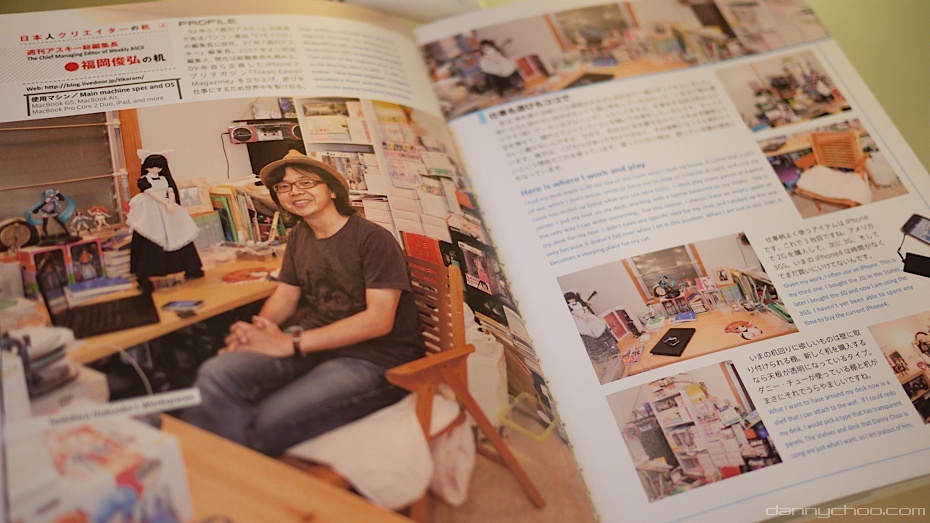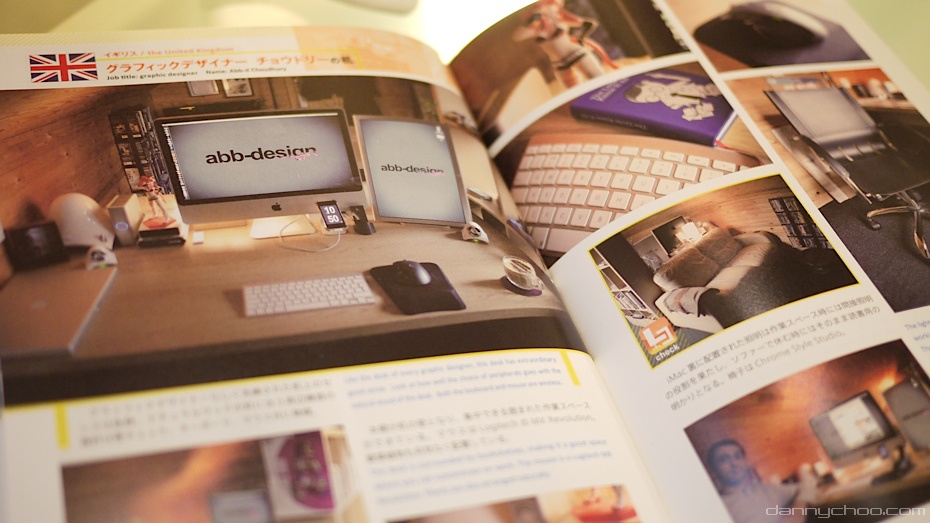
If you want to see the workspaces of professionals (who are otaku) in Japan and all over the world, you’ll definitely want to check out “Otacool Three: Worldwide Workspaces”. Definitely recommended!
![]()
![]()
TITLE: Otacool Three: Worldwide Workspaces
BY: Kotobukiya
PUBLISHER: Kotobukiya
PAGE COUNT: 128
RELEASED: August 25, 2010
![]()
![]()
Created in collaboration with Danny Choo, Tokyo’s dancing stormtrooper, OTACOOL 3 is the third in a series of otaku themed photo-books. Featuring 128 pages of images of otaku “workspaces” submitted by Japanese pop-culture fans from around the world.
![]()
Danny Choo, not only is he the son of the popular shoe designer but he has also done a lot in promoting “otaku” (geek) culture from Japan.
From cosplaying as a Star Wars stormtrooper (which his YouTube videos are highly watched), being the person who has created a lot of the websites for major Japanese pop culture companies and of course, seeing his website “dannychoo.com” grow significantly to the point where he has viewers all over the world who share their passion about otaku culture and their love for Japan, may it be cosplay, video games, action figures, dollfies, you name it…his website has become the community for otaku.
And while “otaku” culture can be seen as negative to some people (a bit extreme), Danny Choo has worked to bring a global understanding of how in Japan…being otaku can also be cool.
In fact, both Danny Choo and I have graced a page of Japan’s Windows 100 Magazine for their “otaku spotlight” for our contributions to otaku pop culture. In my case, moreso for my passion towards Japanese music, but having covered Japanese pop culture for so long and seeing how people outside of Japan have gravitated towards the pop culture (and for some, being part of their own lifestyle), it made me wonder how other otaku professionals have their office workspace setup. Were they full of action figures? Were their offices cluttered? Were some of them using older hardware because they put a lot of money into their anime, video game, action figure or doll obsession?
Will, I can say that “Otacool Three: Worldwide Workspaces” was much better than I was expecting and when I was done reading it, I found myself going back to the book quite a bit. It’s that enjoyable and insightful!
I tend to post a daily workspace photo on my Facebook from time-to-time and with my desk of monitors and computers and hardware devices, you will occasionally find an MS Gundam or Gatchaman-related figure but the people on Otacool go even farther.
The book features photos of the workspaces of Japanese industry professionals and user submissions from Danny Choo’s website. Here are a few examples.
The book (which is in western format so opening from the right than the left) begins with Hibiki Tokiwa, a photographer and graphic designer who works on music CD jacket designs for artists. We see him and his workspace with main machine spec and OS.
For Hibiki and other professionals featured in the book, we get to learn the hardware used in their work but also multiple photos from their office with explanations of why are things organized in a certain way or what they want to accomplish with their office and more. These details provide insight to these professionals which were quite enjoyable to read.

EYE-COM Chief Editior Toshihiro Hukuoka's workspace. Image courtesy of dannychoo.com.
Another page features EYE-COM chief editor Toshihiro Hukuoka’s workspace with his various Mac products but also with action figures all around him.
Go to the next page and you will see “Afro Samurai” creator Takeshi Okazaki’s workspace with his workspace, light table, pens, etc. with books and “Star Wars” figures all around him.
Then you can find a page with Hiromoto-SIN-Ichi who is the only Japanese artist authorized by George Lucas and his workspace is full of Transformers and Star Wars figures all around him.
There are a good number of professionals from Japan and also all over the world featured in “Otacool Three” and as mentioned, really good insight to why they have their office laid out in a certain way, as well as comments on the smart planning and organizing of a workspace.

Otacool 3. Image courtesy of dannychoo.com
And the book does a great job of showcasing various professionals in Japan who work in various industries and their workspace and then you have the worldwide workspace featuring 164 people from 33 countries.
And while we get to see a variety of workspaces (examples can be found here), those that didn’t get the two-pagers are featured in smaller photos. This is probably the only time where I wished that the book was 8.5 x 11, so we can see the pictures in a slightly bigger format. But that is me being a bit nitpicky.
But for the most part, if you want to see how professionals who are otaku in Japan and all over the world have their offices set up, this is a book that is definitely worth checking out.
![]()


Otacool Three. Images courtesy of dannychoo.com.
What I enjoyed about this book aside having full color photos and featuring industry professionals is that people can see how other professionals (possibly in industries that they are wanting to get into) have their offices set up.  For me, I have seen counterparts who work for the animation and music industry have figures on their desks or office and even for my business, walking into the office, you will notice something similar. But also for me, it’s good to see the hardware that is being used.
I guess for some, you may think that these individuals spend too much on their hobby that they probably don’t have good hardware. But it’s good to see that the folks at Kotobukiya Inc. showcase professionals who care about their work and are investing in very good hardware and accessories for their work.
Also, it’s good to have people who make the comment of knowing the balance of having a professional workspace and having their hobby around them and also having things organized. And I’m glad to see that the submissions featured are those who are professionals, freelancers, etc. than just otaku students with their computers and their dolls and action figures. You’ll notice that a lot of the submissions are from people who work in multimedia and design. But occasionally you will find those who are in political science, those who run a film festival, those who are programmers, those who are editors, etc.
Overall, I really enjoyed the third book in the “Otacool” series. The first focused on worldwide otaku rooms, the second on worldwide cosplayers but this is one that caught my eye and overall, it’s a pretty fun book. Granted, you can find some of these photos and user submissions on Danny Choo’s website but for the professionals featured, you’ll need to check out “Otacool Three: Worldwide Workspaces”.
Definitely recommended!

